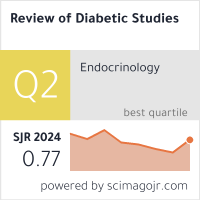Evaluating The Effectiveness Of Diverse Preventive Strategies For Sports Injuries: A Systematic Review Of Randomized Controlled Trials
DOI:
https://doi.org/10.70082/297qm015Keywords:
sports injury, interventions, prevention strategies, injury rate, randomized controlled trialsAbstract
Introduction: Sports have important implications for population health. Therefore, it is challenging to reduce and prevent these injuries. This systematic review aims to assess, update, and summarize studies discussing the different prevention strategies for sports injuries and highlighting their effects and implications for different populations. Methods: A systematic search identified randomized controlled trials (RCTs) published up to June 2024 using PubMed, Medline, OVID, Scopus, and Cochrane Central Register of Controlled Trials. Inclusion criteria were studies examining the effects of preventive interventions on sports injuries among adolescents and adults. Thirteen studies met the criteria, covering interventions such as neuromuscular training (NMT), balance programs, FIFA 11+, lace-up ankle braces, perturbation training, laser therapy, mindfulness, and fascial manipulation. Results: The interventions demonstrated varying levels of effectiveness. NMT programs reduced lower extremity injuries, including a 32% reduction in non-contact injuries (95% CI: 0.51-0.93). Lace-up ankle braces halved the risk of ankle sprains (HR=0.39, 95% CI: 0.24-0.65, p<0.001). Mindfulness programs reduced injury incidence from 1.86 ± 2.23 injuries per participant (p=0.0005). Multistation proprioceptive programs lowered ankle injury risk by 35%, while balance programs reduced ankle sprain rates by 50% (p=0.04). Despite the variability in effectiveness, tailored interventions based on sport, gender, and age showed the highest impact. Conclusion: Preventive strategies effectively reduce injury rates and improve performance, particularly when interventions are tailored. NMT programs, ankle braces, and mindfulness training stand out as impactful. To optimize outcomes, sports organizations should mandate structured warm-up and prevention protocols. Policymakers should implement guidelines ensuring adherence, supported by coach education and regular audits. Future research should investigate long-term adherence, gender-specific effects, and intervention scalability, especially in lower-resource settings.
Downloads
Published
Issue
Section
License

This work is licensed under a Creative Commons Attribution-ShareAlike 4.0 International License.


